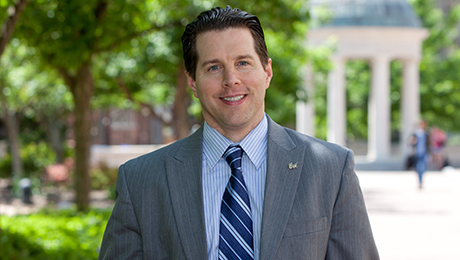The George Washington University’s CARE Network, launched in 2013 and led by the network’s case manager Tracy Arwari, connects students in need to resources around campus. Dean of Student Affairs Peter Konwerski sat down with George Washington Today to discuss how the CARE Network operates.
Q: What is the CARE Network?
A: The CARE Network identifies and responds to students facing academic or personal challenges by connecting them to university resources in order to help retain and support them through graduation. The system "connects the dots" between appropriate university departments to provide streamlined, holistic care for students who need additional support.
Q: What is the purpose of a CARE Network form?
A: A CARE Network form is an online form, which allows any member of the public or of the GW community to share concerns about a student. This information is essential and serves as the foundation for departmental outreach. The CARE form is our entry point for conversations about ways in which we can help students work through their challenges.
Q: Is it completely anonymous?
A: CARE forms can be submitted anonymously; individuals who are submitting the form are not required to provide their information.
Q: In what type of scenario would a student, faculty member or staff member fill out a CARE Network form?
A: A CARE form can be submitted whenever an individual is concerned about a student for any reason. The top three areas of concern are academic, anxiety or depression, and general stress. Whether the concerns are academic, personal, professional or social, the CARE Network will reach out and check in with the student to see what is going on and offer support resources. Professors, academic leaders, house staff and advisers have increasingly utilized the CARE Network to connect students with resources as a result of consistent and sustained outreach done at the beginning of the academic year. These workshops and training programs have resulted in a growth in the number of cases submitted as individuals use the tools available to help students.
Q: Are there certain instances when it would be a better option to use other reporting methods, for example, alerting the university police or a staff member directly, rather than filling out a form?
A: If a student needs urgent attention in an emergency situation, individuals should contact the GW Police Department, so that the student may receive immediate outreach and support.
Q: Once a CARE Network form is submitted, what happens next? Who reads it, and how does that person follow up with the student of concern?
A: When a CARE form is submitted, the case manager reviews the information in the form, references any past reports, and makes a determination about who is most appropriate to reach out to the student. The CARE Network works with partners in all academic advising offices, the Center for Student Engagement, Disability Support Services, the Multicultural Student Services Center, International Services Office, Office of Academic Support for Student Athletes, University Counseling Center, Student Health Service and GW Housing, among others. Additionally, the case manager often manages complex or multifaceted cases where multiple offices may need to be involved to most appropriately address the concern.
Q: Why is the CARE Network an important service at GW?
A: Often, the most difficult part of getting help can be asking for it in the first place. The CARE Network provides a means by which departments reach out and offer services to the student, taking this burden from them. Students may be unaware of the resources available to them, and the CARE Network introduces them to support that may allow them to be successful both in and out of the classroom. The CARE Network allows community members to look out for one another, letting students know that help is available and that they are not alone as they face academic and personal challenges.


